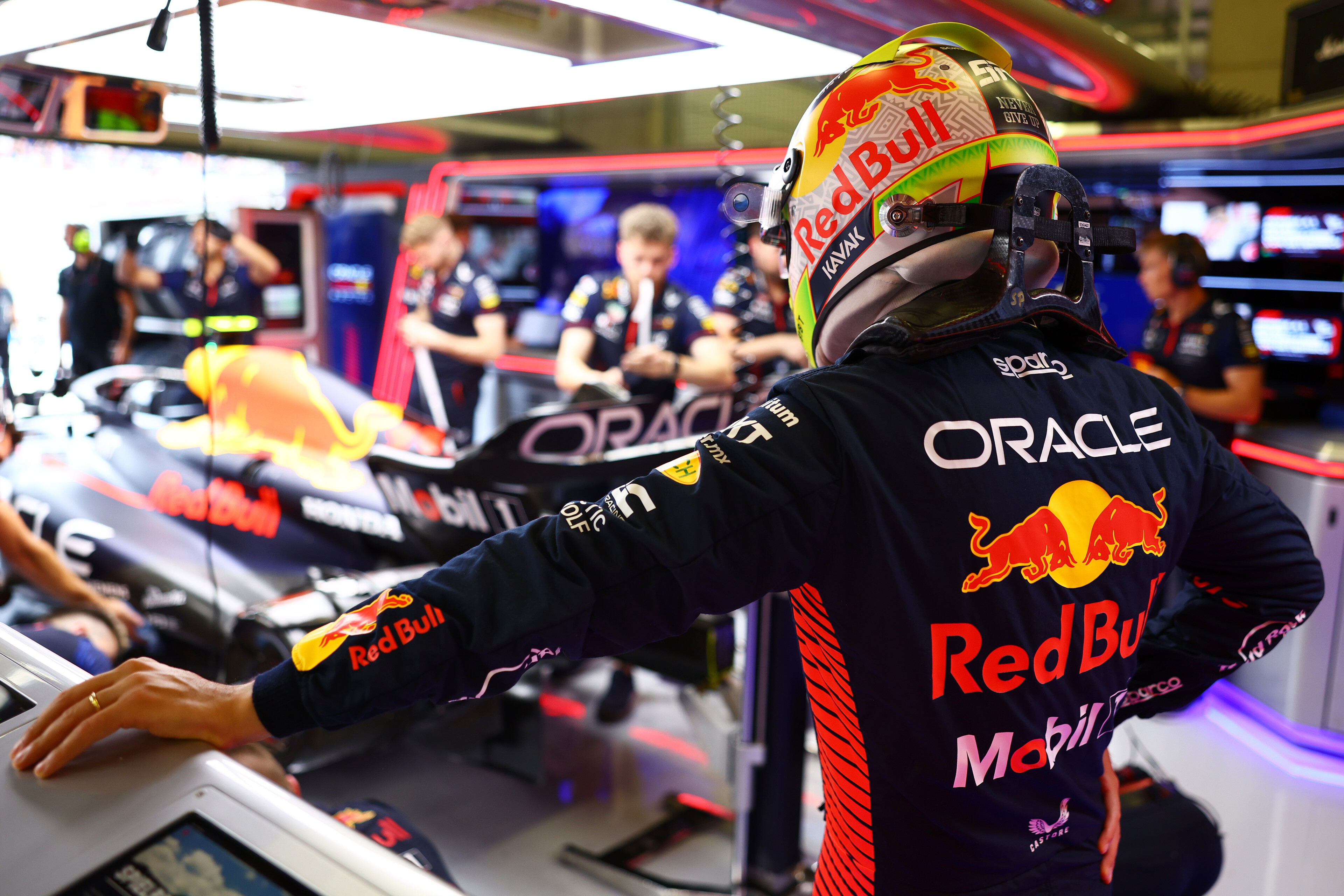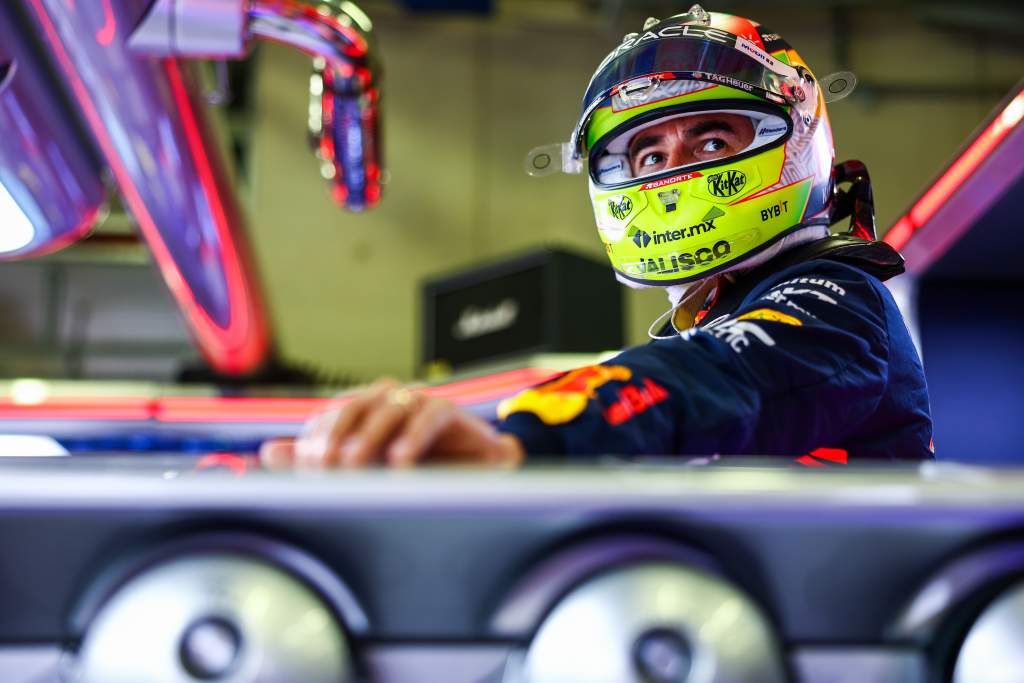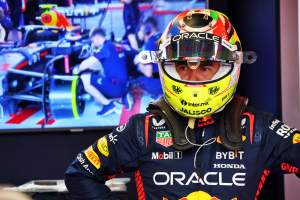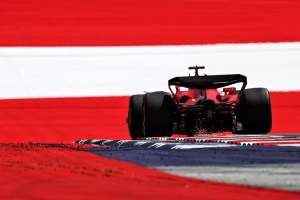Up Next

It shouldn’t be underestimated just how much exasperation Christian Horner was wearing across his face as he joined Sky Sports F1 to discuss the Red Bull Formula 1 team’s Austrian Grand Prix qualifying performance on Friday evening.
Any satisfaction that a Max Verstappen pole position had given Horner, in the face of a challenge from a resurgent Ferrari, had in no uncertain terms been drained by yet another failure on Sergio Perez’s part to make it through to the final part of qualifying – this time on account of three track limits offences on his three fast laps in Q2.
Horner paused, attempting to muster a reflective chuckle as he considered how to respond to the question of what he’d say to Perez – whom he was at that point yet to speak to.
“He’s got the pace today. He got a car that was easily capable of being on the first or second row, he was matching Max’s times…” his voice trailed off, to be followed by a Gordon Ramsay-esque lament.
“Stay in the white lines.”
This time there was no furrowing of the brow as on previous occasions, no shrugging this off. Nor was there any “stop thinking about the championship and just drive” rhetoric, a la the Sunday of the Spanish GP. Perhaps that’s explainable by the fact those Perez title hopes are now gone, but so too here was the supportive, understanding tone.

Here instead was as big an acknowledgement there’s been that this is finally costing Red Bull something.
So what, you might ask?
If the second car isn’t there at the front of the field, Red Bull is still likely to win in the hands of Verstappen.
But for a team enjoying almost unprecedented success, even by its own lofty standards, there’s a ruthlessness to the Red Bull desires that these Perez performances are stopping it from attaining. If a 1-2 is achievable in qualifying – and Perez’s pace when he got it together at the Red Bull Ring suggests there was a strong likelihood of that – then why would, or should, Red Bull settle for anything less?
Perez was not alone in cursing the track limits or the way they’re being enforced at the Austrian GP. He claimed too that on his final push lap, which was a mere 0.039 seconds shy of Verstappen’s Q2 benchmark, he lost time while he encountered turbulent air off the back of Alex Albon’s Williams out of the final corner, which he in turn said contributed to his crossing of the white line that caused his lap to be scrubbed off.

But there was little in the way of sympathy from Horner.
“It’s not going to have helped. But then you build in a little bit more margin [on your lap].”
That suggests patience is wearing thin. While any frustration in situations where the pace wasn’t there was publicly met with encouragement, with a rallying call to trust the process, here no such quarter was given in respect of the fact Perez looked genuinely quick. There was no significance lost in the way Horner stressed of Perez “he’s got the pace today“.
It’s no wonder that frustration kept cropping up; there was simply no need to be treading the risk/reward line so tightly, not at that stage. As Horner put it, “that’s not the time to be doing it”.
And there was nothing subtle either about how Horner talked up the way Verstappen contained himself and responded to the team’s instruction to stay within the boundaries once he’d fallen foul of them.
“He got caught out a couple of times with the limits, rowed it back in,” he said. “And the most frustrating thing for a driver is to drive within the car, especially within qualifying. So, great discipline, great mental discipline again from him.”

By citing Verstappen’s exercising of discipline, so too Horner highlighted Perez’s lack of it. That’s quite the charge for such an experienced driver to be lumped with – but the evidence of three breaches in three attempts is damning.
Remember that point earlier about Red Bull’s performance goals?
“Of course, the frustration for us as a team is now we have two Ferraris [that] are a little closer versus one Red Bull with Checo out of position.”
Hearing Horner say that, I couldn’t help but be transported back to the 2019 Hungarian Grand Prix. On that day, Verstappen was nip-and-tuck with Lewis Hamilton in the fight for victory but appeared to have a marginal edge, only for Mercedes to pit Hamilton late on for mediums – a call that swung the pendulum decisively in his favour, as Hamilton passed Verstappen inside the final five laps to win.

That Hamilton was able to make that stop without major consequence was felt at the time to be largely down to the fact Red Bull didn’t have its second car in position to play the rear-gunner role it so badly needed. Had Pierre Gasly been third, say, 15s behind the front two, such a strategy would never have been available to Mercedes.
Instead, Gasly finished sixth, a lap down and behind the McLaren of Carlos Sainz, in what proved to be his final race for the senior team.
Now, that’s not to compare like-for-like. Perez hasn’t been in anywhere near that sort of performance trouble even at his lowest ebbs, and there’s no suggestion his drive is in jeopardy; that’s not the point being made here. As unrelenting as Horner was, he moved immediately to shut down such a notion before the question of Perez’s future had even finished being asked. “Checo’s fixed. Checo, everybody’s fully behind. So any talk of replacing Checo is wide of the mark.”
And it’s not even a given that Ferrari, impressive though its turn of speed in qualifying was, will sustain a challenge in the grand prix proper. Qualifying is its strong suit in 2023 and its car does tend to churn up the tyres more quickly than any of its immediate rivals. Would it really be a surprise to see that trait rear its head again on Sunday?
But a team doesn’t become a multiple championship-winning operation by banking on such hypotheticals. It wants the most sure-fire chance of winning a grand prix it can have, with both drivers contributing to that scenario. From that point of view, Perez did let Red Bull down, and Red Bull has a right to be irked.

The Austrian Grand Prix is, don’t forget, the scene of Ferrari’s most recent F1 victory almost 12 months ago. So say Leclerc and Sainz do keep pace with Verstappen, and Ferrari can toy with the Red Bull on strategy (let’s save any flippant remarks about Ferrari’s pitwall decisions; after all, the 2022 race played out in not such dissimilar fashion), that’d be a situation that would immediately be improved for Red Bull, and mostly likely neutered as a threat altogether, if Perez was starting where he was capable of qualifying.
And even if Verstappen does saunter off at the front of the field in the grand prix, that will only serve to underline what could have been if Perez can’t make swift progress to the leading pack.

It goes without saying, but this is not what Red Bull brought Perez – an accomplished F1 race winner, who’s shown this season how well he can compare to a driver of Verstappen’s level – in to do. Nor is it reflective of the calibre of driver Perez is.
He has an immediate opportunity to show he’s capable of exercising the caution that Red Bull so badly wanted to see with an effective repeat of qualifying for the sprint race on Saturday. Really, Perez needs to come good on that; this needn’t be defining but, if the dissenting voices have started, he can’t get away with this sort of thing for much longer.






